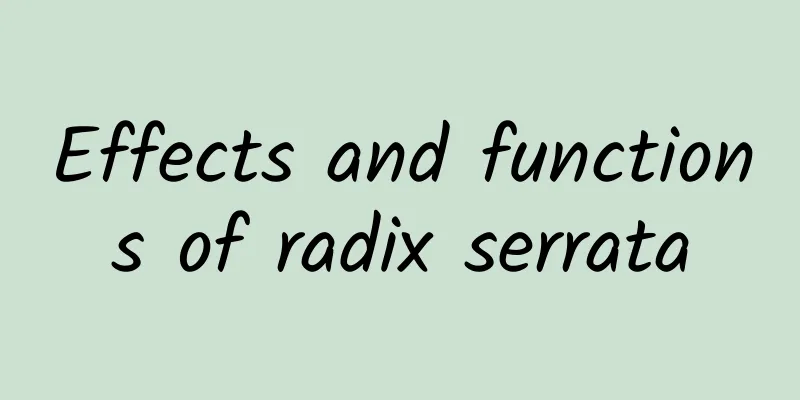Six sex hormones: Causes of high testosterone

|
Among the six sex hormones, if the testosterone level is high, it is generally caused by abnormal ovarian function. If a man has high testosterone, it means that the testicle function is abnormal. High testosterone in women is more harmful to women. It can cause women to have sparse menstruation or even amenorrhea, and it can also cause changes in menstruation. In addition, it can cause ovulation dysfunction and cause infertility. Six sex hormones, high testosterone 1. Precocious puberty: idiopathic male precocious puberty, familial male precocious puberty; 2. Adrenal diseases: adrenal cortical hyperplasia, adrenal cortical tumors (adenocarcinoma increases significantly, adenoma also often increases); 3. Testicular diseases: testicular tumors, testicular feminization; 4. Ovarian diseases: polycystic ovary syndrome, ovarian masculinizing tumors; 5. Others: pineal tumor, idiopathic hirsutism, hypothyroidism, androgen, HCG and estrogen treatment are moderate. The effects of high testosterone in women are: high testosterone in women will manifest as menstrual changes such as infrequent menstruation, amenorrhea or dysfunctional uterine bleeding, ovulation dysfunction, and basal body temperature. After a long period of onset, some patients will have masculine changes, such as excessive hair growth, enlarged Adam's apple, deep voice, etc. Some are obese, have acne, poor breast development, poor uterine development, enlarged ovaries, etc. A small number of patients will experience clitoral enlargement, which will affect normal ovulation and cause infertility. What to do if testosterone is high 1. Drug treatment: Patients with high testosterone can use drug treatment to inhibit androgen production or anti-androgen, control weight and remove excess hair. High testosterone is mainly treated with Diane 35. The drug treatment can counteract the effects of androgens and promote ovulation of follicles. It is usually taken for about 3-6 months. The medication needs to be taken starting from the first day of menstruation, for 21 consecutive days, and then stopped. During the treatment, six hormone tests need to be performed regularly. After the six hormone tests, if they return to normal, the medication can be stopped. Women with cystic ovary syndrome and other diseases can take metformin tablets. Generally, metformin should be taken with the first bite of food. Metformin controls the absorption of excess sugar during meals and prevents weight gain. Taking Diane 35 after meals can effectively reduce testosterone levels. 2. Surgical treatment: If the medication is ineffective and the reduction in androgen is not obvious, laparoscopic surgery should be considered. The follicles are punctured under laparoscopy to reduce the androgen level, thus achieving the therapeutic goal. (1) Patients who have given birth and have no plans to have more children can undergo resection surgery. (2) Patients who wish to have children can undergo laparoscopic electrocautery or laser removal of polycystic ovary syndrome to reduce androgen levels. 3. Traditional Chinese Medicine conditioning: Regulate female hormones, restore ovarian function and promote ovulation through traditional Chinese medicine methods. Testosterone is the main hormone that maintains male sexual characteristics, but women's ovaries and adrenal glands also produce small amounts of androgens. When a woman's testosterone level is too high, it seriously damages her ovarian function, affects follicle production, and ultimately leads to female infertility. High testosterone levels have a certain impact on pregnancy, but most women can become pregnant naturally after treatment. Under normal circumstances, the testosterone level in women's serum is stable within a certain range. If it exceeds the normal value, it indicates the possibility of disease. During the follicular phase of a normal menstrual cycle, the average serum testosterone concentration is 0.43 ng/ml, with a maximum limit of 0.68 ng/ml. If it exceeds 0.7 ng/m1 (equal to 2.44 nmol/L), it is called hypertestosteronemia or hyperandrogenism. |
<<: What is the reason for high progesterone in the six sex hormones?
>>: How women suppress testosterone
Recommend
What to do if you have acid burps
Many people burp after eating or due to some othe...
How to treat traumatic arthritis
Traumatic arthritis is a common joint disease in ...
What should pregnant women do if they are bitten by mosquitoes?
If a pregnant woman is bitten by mosquitoes, she ...
What causes thick white tongue coating? Teach you how to identify your health by looking at your tongue coating
The tongue coating is a thin, white, and moist co...
Can drinking Astragalus soaked in water lower blood sugar?
Astragalus is a very common Chinese medicinal mat...
Itchy throat, cough, chest discomfort
If you have an itchy throat, cough, or chest disc...
Successful cases of rabies treatment
Rabies treatment is generally unsuccessful becaus...
If your throat is inflamed, eat these seven kinds of heat-reducing fruits
When you have a cold or get a sore throat, it is ...
How to tell if you have liver palms
There is a saying that goes like this: Long illne...
Is lupus nephritis serious?
Is lupus nephritis serious? Many patients diagnos...
Symptoms of excessive lead
Lead poisoning is a common poisoning phenomenon, ...
What are the benefits of drinking Patchouli in water?
Patchouli, also known as mountain fennel, is a pe...
Prevention and treatment of frozen shoulder
We also call frozen shoulder periarthritis of the...
Symptoms of recovery from allergic dermatitis
Allergies have always been a problem that everyon...
Can I use moxibustion during menstruation for cold uterus?
In today's society, more and more female frie...









